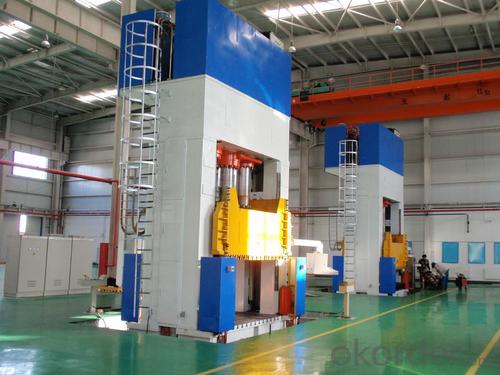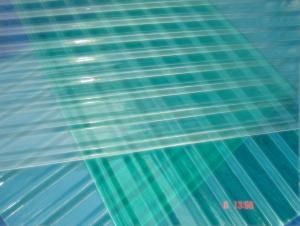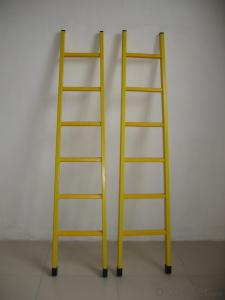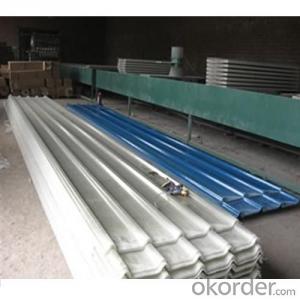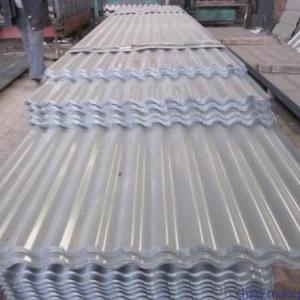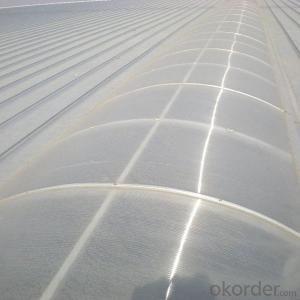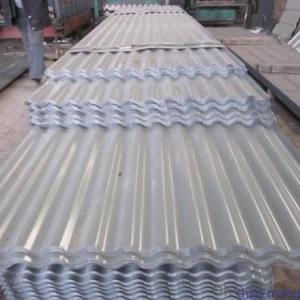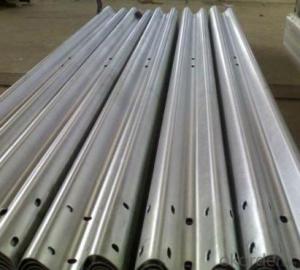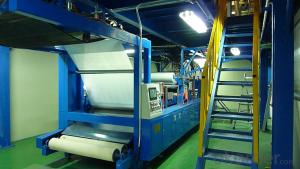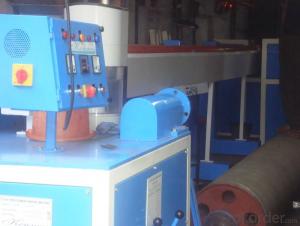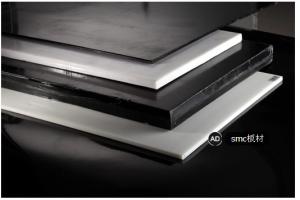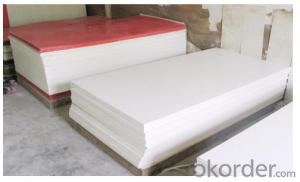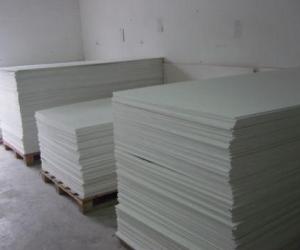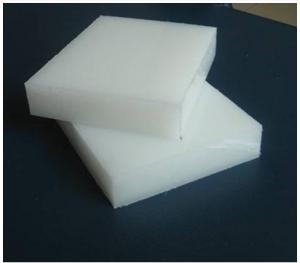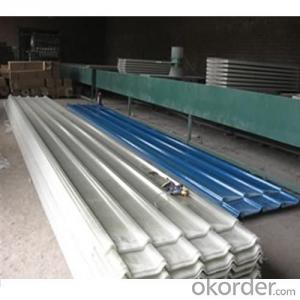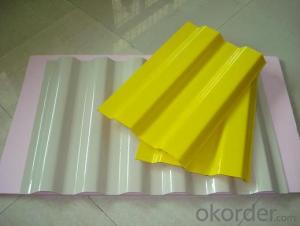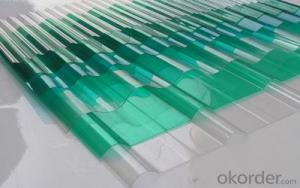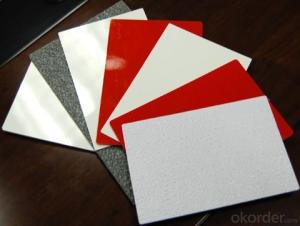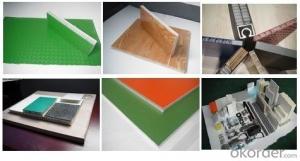FRP Roofing Panel SMC Pressed Valve Chamber Cover with Hydraulic System
- Loading Port:
- Tianjin
- Payment Terms:
- TT or LC
- Min Order Qty:
- 2 m²
- Supply Capability:
- 100000 m²/month
OKorder Service Pledge
OKorder Financial Service
You Might Also Like
Introduction
SMC and BMC are abbreviations of respectively Sheet Molding Compound and Bulk Molding Compound. SMC and BMC form a family of structural, fiber reinforces thermosetting resins. SMC and BMC are intermediate materials from which a large variety of products can be manufactured by compression molding or injection molding. Base materials of SMC and BMC are, generally spoken, unsaturated polyester resins, glass and mineral filler materials, such as chalk or aluminum trihydrate. The composition of the compounds can be adapted to the application where it is used for. Specific properties such as flame retardancy, surface quality and paintability can be achieved by adding specific, functional materials. SMC and BMC product are used in a very broad range of applications
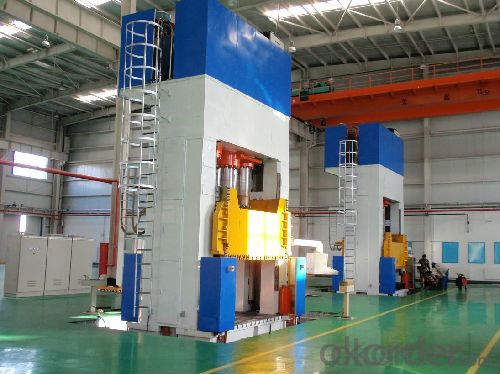

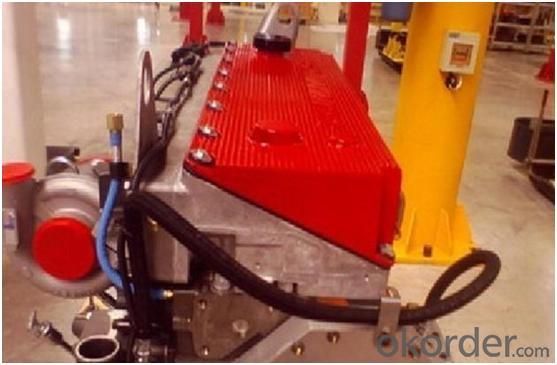
Product Description
1. Y27 Series Frame-type Hydraulic Press is a kind of multifunctional precision machine which has high speed.
2. Optimized design, the frame is entirely welded with steel plates, and treated to relive stress by tempering for high precision.
3. Cartridge valve equipped for hydraulic control system, reliable, durable and less hydraulic shock, shorter connection pipeline and fewer release points.
4. Centralized button control system, with adjustment, hand and semi-auto operation modes at operator’s choice (set-stroke single and set pressure single).
5. Four-angle and eight-side guide rail in high precision and with strong capacity against deflection, concentrated lubrication.
6. New type of oil cylinder sealing components marked by high reliability and long service life.
7. Sliding blocks operating in high speed, ensuring high efficiency.
8. The slide operating pressure, no-load quick travel and low-speed movement can be adjusted according to technological requirements.
9. Hydraulic cushion is fitted beneath the worktable; adequate knockout hole and hydraulic cushion are prepared on the plate of worktable with the operating modes including drawing, ejection and no ejection.
10. The working speed of this equipment is 3 to 4 times faster than that of Y41. It employs eight-side guide device and ejecting device, which can automatically eject workpieces with accurate guiding and fast speed.
11. The drawing device can be added to this equipment in order to change moulds easily. But the stretching of large metal parts needs to add hydraulic cushion to this equipment.
Advantages
Reduce the cost of localization
Vibration and noise reduction
Integration respirator filler cap
Sealing performance
Application
1. It is suitable for the press fitting and stretch forming of metal and plastic products as well as the movements of coining and overprinting.
2. It mainly applies to the fields of machine tool, engineering machinery, bearings, washing machine, automobile parts, motor components and powder metallurgy.
3. It is suitable for the molding of plastic products, such as DMC and BMC.
4. The machine, with a high degree of automatization, is particularly suitable for the mass production of parts. And it can be used as assembly line with several such equipments.
Specification
Item | Unit | Y27-500 | |
Nominal Force | KN | 5000 | |
Return Force | KN | 900 | |
Ram Stroke | mm | 900 | |
Daylight | mm | 1400 | |
Cushion Force | KN | 2000 | |
Cushion Return force | KN | 780 | |
Cushion Stroke | mm | 350 | |
Ram Speed | Idle Stroke | mm/s | 150 |
Pressing | mm/s | 10-22 | |
Return | mm/s | 120 | |
Cushion Speed | Knock out | mm/s | 55 |
Return | mm/s | 140 | |
Table Size | LR | mm | 2200 |
FB | mm | 1600 | |
Cushion Size | LR | mm | 1720 |
FB | mm | 1120 | |
Overall Dimensions | LR | mm | 4700 |
FB | mm | 3100 | |
Height above the floor | mm | 5800 | |
Power Motor | KW | 2*30 | |
Total Weight(Approx) | KG | 57000 | |
FAQ
1.Which country do you mainly export to?
A: Our products are very popular in Mid East, India, South East Asia, Latin America, Africa.
2.Q: What’s the advantage of you compared with other suppliers experienced in foreign trade?
A: We have been specialized in FRP products for over decades years and approved by many domestic companies. Except for our quality and price, we’re also able to give you the best service.
- Q: Are FRP roofing panels resistant to bird droppings?
- Yes, FRP (Fiberglass Reinforced Plastic) roofing panels are generally resistant to bird droppings. The smooth surface of FRP panels makes it difficult for bird droppings to adhere and stick to the surface. Additionally, FRP panels are non-porous, which means that bird droppings are less likely to penetrate and cause damage to the panels. However, it is important to note that if bird droppings are not cleaned regularly, they can still accumulate and potentially stain the FRP panels over time. Therefore, routine cleaning and maintenance are recommended to ensure the longevity and aesthetic appeal of FRP roofing panels.
- Q: Can FRP roofing panels be used in both residential and commercial applications?
- Yes, FRP (fiberglass reinforced plastic) roofing panels can be used in both residential and commercial applications. FRP panels are known for their durability, strength, and longevity, making them suitable for a wide range of applications. In residential settings, FRP panels can be used for roofs, skylights, carports, or patio covers. They provide protection against harsh weather conditions, such as extreme temperatures, UV radiation, and heavy rainfall. Similarly, in commercial applications, FRP roofing panels are commonly used for warehouses, factories, agricultural buildings, and commercial buildings such as shopping centers or office complexes. They offer excellent resistance to corrosion, chemicals, and fire, making them a reliable choice for commercial structures. Moreover, FRP panels come in various profiles, colors, and sizes, allowing for customization to suit the specific requirements of any residential or commercial project. They are lightweight, easy to install, and require minimal maintenance. Additionally, FRP panels have good insulation properties, which can contribute to energy efficiency in both residential and commercial buildings. Overall, FRP roofing panels are versatile and can be used effectively in both residential and commercial applications, providing durability, strength, and protection against environmental elements.
- Q: Are FRP roofing panels suitable for residential buildings?
- Yes, FRP (Fiberglass Reinforced Plastic) roofing panels are suitable for residential buildings. These panels offer several advantages that make them a popular choice for residential roofing applications. Firstly, FRP roofing panels are lightweight yet highly durable. They are made from a combination of fiberglass and plastic, which gives them excellent strength-to-weight ratio. This means that they can withstand heavy loads, such as snow or hail, without adding excessive weight to the structure. The durability of FRP panels ensures a long lifespan, reducing the need for frequent replacements. Secondly, FRP roofing panels are resistant to various weather conditions. They can withstand extreme temperatures, UV radiation, and high winds, making them suitable for different climates. FRP panels also have a high resistance to corrosion, moisture, and chemicals, which makes them ideal for areas with high humidity or near coastal regions. In addition to their strength and resistance, FRP roofing panels offer excellent insulation properties. They provide effective thermal insulation, helping to maintain a comfortable indoor temperature. This insulation can contribute to energy savings by reducing the need for excessive heating or cooling. Furthermore, FRP roofing panels are versatile and can be customized to fit different architectural styles. They are available in various colors, textures, and profiles, allowing homeowners to choose a design that complements their residential building. Lastly, FRP roofing panels are relatively easy to install and require minimal maintenance. They can be installed quickly and efficiently, reducing labor costs and construction time. Additionally, FRP panels do not require regular painting or sealing, saving homeowners time and money on maintenance. Overall, FRP roofing panels are a suitable choice for residential buildings due to their durability, weather resistance, insulation properties, versatility, and low maintenance requirements.
- Q: Can FRP roofing panels be installed on curved or domed roofs?
- Yes, FRP (Fiberglass Reinforced Plastic) roofing panels can be installed on curved or domed roofs. FRP panels are known for their flexibility and can conform to various shapes and contours, making them suitable for installation on curved or domed surfaces. However, it is important to ensure that the panels have the appropriate flexibility and bending capabilities to match the specific curvature or dome shape of the roof. Additionally, proper installation techniques and fasteners must be used to ensure the panels are securely attached to the roof structure. Consulting with a professional contractor or manufacturer is recommended to ensure that the FRP panels are suitable for the specific curved or domed roof application.
- Q: Can FRP roofing panels be recycled?
- Yes, FRP roofing panels can be recycled. FRP stands for Fiberglass Reinforced Plastic, and it is a composite material made from a combination of fiberglass and plastic resin. While the recycling process for FRP can be more complex compared to other materials, such as metal or paper, it is still possible to recycle FRP roofing panels. The recycling of FRP roofing panels typically involves grinding the material into small pieces or fibers, which can then be used in the manufacturing of new products. These recycled FRP materials can be used in various industries, such as construction, automotive, and even consumer goods. However, it is important to note that not all recycling facilities accept FRP materials, as the process can be expensive and challenging. Therefore, it is advisable to check with local recycling centers or waste management facilities to determine if they have the capability to recycle FRP roofing panels. In addition to recycling, another option for managing FRP roofing panels at the end of their lifespan is to consider repurposing or reusing them. For example, they can be used as wall cladding, insulation, or even in craft projects. Overall, while the recycling of FRP roofing panels may not be as straightforward as some other materials, it is still possible to recycle them and give them a new life, contributing to a more sustainable and environmentally friendly waste management approach.
- Q: Are FRP roofing panels suitable for theme parks?
- Yes, FRP roofing panels are suitable for theme parks. They are lightweight, durable, and provide excellent protection against UV rays, extreme weather conditions, and corrosion. Additionally, FRP panels can be customized to match the theme park's aesthetic, making them a versatile and attractive roofing option.
- Q: Are FRP roofing panels resistant to chemical fumes or gases?
- Yes, FRP (fiberglass reinforced plastic) roofing panels are generally resistant to chemical fumes or gases. The inherent properties of FRP, such as its non-reactive nature and high resistance to corrosion, make it an ideal choice for environments where chemical exposure is a concern. However, the specific resistance of FRP roofing panels to certain chemicals may vary, and it is recommended to consult with the manufacturer or supplier for detailed information on chemical compatibility.
- Q: Can FRP roofing panels be used for both indoor and outdoor applications?
- Yes, FRP roofing panels can be used for both indoor and outdoor applications. FRP panels are known for their durability, weather resistance, and versatility, making them suitable for various environments and applications, including both indoor and outdoor settings.
- Q: Can FRP roofing panels be used for outdoor kitchens?
- Yes, FRP (Fiberglass Reinforced Panels) roofing panels can be used for outdoor kitchens. FRP panels are a popular choice for outdoor applications due to their durability, weather resistance, and low maintenance requirements. They are designed to withstand harsh weather conditions, such as rain, snow, and sunlight, making them an excellent option for outdoor kitchens. FRP roofing panels are lightweight yet strong, making them easy to install and handle. They are also resistant to corrosion, rust, and rot, which is essential for outdoor environments where moisture and humidity are present. Additionally, FRP panels are available in a variety of colors and styles, allowing you to choose a design that suits your outdoor kitchen's aesthetic. Furthermore, FRP panels provide excellent insulation properties, helping to regulate temperature and minimize energy costs in outdoor kitchens. They can effectively resist heat transfer, keeping the space cooler during hot summer days and warmer during colder seasons. Overall, FRP roofing panels are a reliable and practical choice for outdoor kitchens. They offer durability, weather resistance, low maintenance, and insulation properties, making them an excellent investment for creating a functional and attractive outdoor cooking area.
- Q: Do FRP roofing panels require a specific type of ventilation?
- Yes, FRP roofing panels typically require proper ventilation to prevent moisture buildup and ensure the longevity of the panels.
Send your message to us
FRP Roofing Panel SMC Pressed Valve Chamber Cover with Hydraulic System
- Loading Port:
- Tianjin
- Payment Terms:
- TT or LC
- Min Order Qty:
- 2 m²
- Supply Capability:
- 100000 m²/month
OKorder Service Pledge
OKorder Financial Service
Similar products
Hot products
Hot Searches
Related keywords



